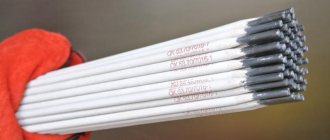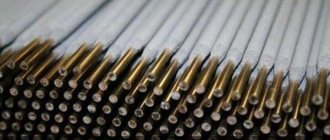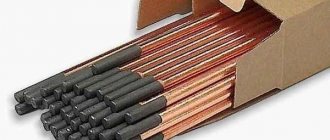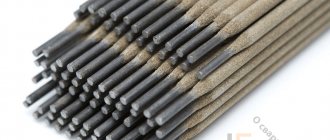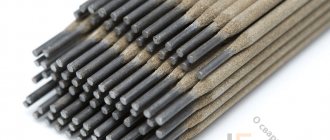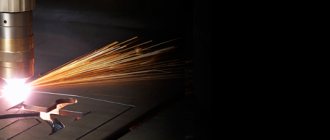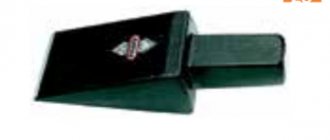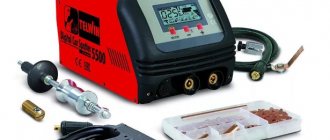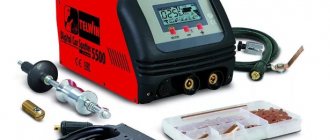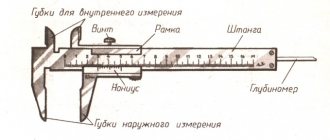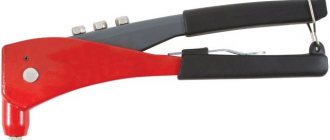general information
Electric arc welding is a method of joining metals that is based on the use of an electric arc. The arc heats and melts the metal, allowing a weld to be formed. Can reach temperatures over 6000 degrees. This is sufficient to melt most existing types of metals.
Electric arc technology is widely used in welding and cutting metals. It can be manual, semi-automatic and automatic.
Advantages and disadvantages of the technique
Any method of processing metal surfaces has pros and cons. Electrode cutting also has certain advantages and disadvantages.
What are the advantages? To carry out electrode cutting of metal, you do not need special equipment. As well as the high qualifications required for some types of processing.
Electrode cutting is quite safe, but, of course, it is necessary to observe fire safety and process technology.
The disadvantages include processing speed. It directly depends on the thickness of the metal. It doesn’t matter what the welder’s skills are, he will take longer to cut a thick part. The disadvantages also include the unevenness of the cut.
Electrode cutting of metal makes it sloppy, which prevents the use of this technique in some types of work. These include those parts for which appearance is important.
Electric arc welding technology
Electric arc welding technology is simple. The welding machine is connected to the network. One cable is connected to the part, and the second to the electrical holder with the electrode. The end of the electrode is tapped on the surface of the metal, exciting an arc. An arc is formed between the electrode and the metal being welded. The arc instantly begins to give off heat, melting the edges of the metal and the electrode itself (if it is consumable). As a result, a weld pool is formed.
It mixes the molten electrode and the base metal. They fill the joint between two parts, and after cooling, a strong, permanent connection is formed. In this case, so-called slag can form on the surface of the weld. To perform welding, you can use consumable and non-consumable electrodes or wire. The choice depends on the arc welding technology you choose. For example, in manual arc welding, consumable electrodes are most often used. And for semi-automatic welding - consumable or non-consumable wire.
If you do not know how to maintain a stable arc, you can use special electrodes or welding wire. They must contain sodium, potassium or calcium. These elements stabilize the arc due to their ionizing properties.
Shielding gas can be used to protect the welding area from oxidation. For example, argon or carbon dioxide. Such gases are supplied directly to the weld pool, protecting it from oxygen from the atmosphere.
Electric arc welding can be carried out with both direct and alternating current. We recommend using direct current, since the metal will splatter less and the seam will be of much better quality. If you are a beginner, then DC operation is a must.
Metal processing by cold and hot methods
Metal cutting is carried out using cold (mechanical) and hot methods. The first is characterized by a mechanical effect on the product being processed. The hardness of the cutting tool matters. Cutting is carried out with a tool that is significantly superior in hardness to the workpiece. This method uses the following tools:
- a circular saw;
- Bulgarian;
- guillotine;
- band saw machine.
Hot cutting of parts involves thermal exposure to them. They melt in the right place, and the remaining melt is removed with gas. Hot cutting includes types of cutting:
- oxygen gas;
- laser;
- plasma.
Cold metal working does not always achieve the required cleanliness of the final product. This problem occurs with oxygen and air-arc cutting. These methods are used only as preparatory work.
Air arc cutting schemes
Electric arc cutting of metals
Metal cutting using arc welding is one of the oldest cutting methods. There is manual arc cutting using a consumable or non-consumable electrode and air and oxygen-arc cutting. Let's take a closer look at each of the methods.
Non-consumable electrode cutting
Let's start with a little used, but still used method. Cutting with non-consumable electrode. A graphite or carbon rod is used as an electrode; cutting is performed using any type of current, but with straight polarity. The current strength should not exceed 800A. To cut metal, it must first be heated with an arc and then smelted.
Why is this method little used? The point is that it is only applicable in special cases. For example, when cutting scrap or dismantling old metal structures. In short, for working with complex large-sized projects. There is also no need to talk about the beauty of the cut. The work turns out uneven and sloppy. But this method can cut any metals: from cast iron to non-ferrous metals.
Consumable electrode cutting
But cutting with a consumable electrode is perhaps the most common method of electric arc cutting. The cut is much neater and smoother than when using the previous method. To perform cutting, set a higher amperage (30 percent more than when welding). You can focus on the thickness of the electrode. For a rod 1 millimeter thick, set the current to approximately 50A. For a 2 mm rod - 100A. And so on. The metal itself must be heated with deep penetration. This heating method is also called the “support method”. Can cut most metals.
To perform a simple cut at home, you can use any consumable electrodes. But to achieve better results, use special electrodes for cutting metal. Usually special electrodes have a special coating. Thanks to it, the welding process is faster and easier.
But despite the improved cut quality, it is still far from ideal. If we compare this method of cutting metals with more technologically advanced ones, it will lose in everything. Starting from the quality of the cut, ending with its aesthetic characteristics. At the same time, the cutting process itself is very slow.
Air and oxygen arc cutting
Air-arc and oxygen-arc cutting of metal using electric arc welding have no differences, except for one thing. In air cutting, the metal is first melted by the heat of the arc, and then it is blown out using compressed air. When using oxygen cutting, the technology is the same, but instead of air, an oxygen flow is used.
This cutting method is used when working with stainless steel sheets. In this case, the thickness of the sheet should not exceed 20 millimeters. Also, such cutting methods are used to remove defective parts from a part.
To perform such cutting, you need to set the welding machine to constant current and select graphite electrodes. Tubular electrodes can also be used. When using tubular electrodes, oxygen is supplied through a through hole in the welding rod. The method is effective, but labor-intensive. It is much easier to apply compressed air or a stream of oxygen directly to the incision site.
Principle of operation
In order to cut metal using an inverter, you must select the correct current values. This depends on the type of cut, the thickness of the metal and the selected electrode. When separating cutting, the metal sheet should be placed in such a position that the molten metal can flow out freely.
The electrodes must be in a strictly perpendicular position with respect to the surface. If the sheet is located vertically, then the movement of the electrode should be from top to bottom. The electrodes themselves must be thicker than the product being cut. Thin metal can be cut using electrodes with a diameter of 3 millimeters. For thicker ones, electrodes of 4 and 5 millimeters are used.
To eliminate surface defects, surface cutting should be used. In this case, the electrode should be held at a slight angle, five to ten degrees. If it is necessary to make a groove, the electrode must be rocked from one side to the other, gradually immersing it into the cavity being formed.
Electrodes can also be used to cut holes in metal. Melt holes until the desired diameter is achieved. First, burn a small hole, and then gradually expand it. The electrode must be held strictly perpendicular to the surface in which the hole is being cut, otherwise the edges may not be completely smooth. Only minor deviations from a right angle are allowed. Before starting the process, it is necessary to check the serviceability of the equipment used. The arc should be ignited by striking or tapping.
Waterjet method
Cutting products using the waterjet method has the following definition: cutting a material by exposing it to a mixture of sand and water supplied under pressure through a narrowly directed nozzle. Sand in combination with water can cut metal products with a thickness of 30 cm.
The method is one of the innovative ones. After cutting the part, there is no need for additional processing of its edges.
Waterjet cutting speed
This method does not apply to the hot method of cutting metal products, since there is no thermal effect on the workpiece. Thanks to this, cutting can be carried out without deforming the product.
The main disadvantage of the waterjet method is the inability to cut metals susceptible to corrosion. The equipment used is expensive and is not always available for private needs.
Types of cold cutting
This technique has a number of advantages, including:
- high accuracy of the result;
- efficiency;
- evenness of the edges of the cut.
The main disadvantage is that only straight cuts can be made.
Cutting metal with a circular saw allows you to make high-quality and precise cuts with the ability to control their angle. The main disadvantage of the tool is that it leaves behind a large amount of waste. The saw operates at a relatively low speed. It does not allow cutting parts to a significant depth.
Cutting elements using a grinder is used for profile rolling. The grinder does not leave oxides or scales on the processed material. There is little waste left after metal processing. This method has low productivity compared to other options.
Guillotine cutting has a number of limitations regarding parts with complex configurations, but is considered the most inexpensive and effective metalworking method.
Construction of a guillotine machine
Using a band saw is considered the most versatile option for processing any metal parts. The device allows you to work at any angle, avoiding serious heat loss. As a result, the final product has perfect edges. The machine is used only for products with certain dimensions.
Band saw machine design
